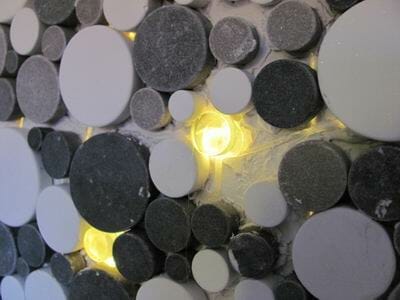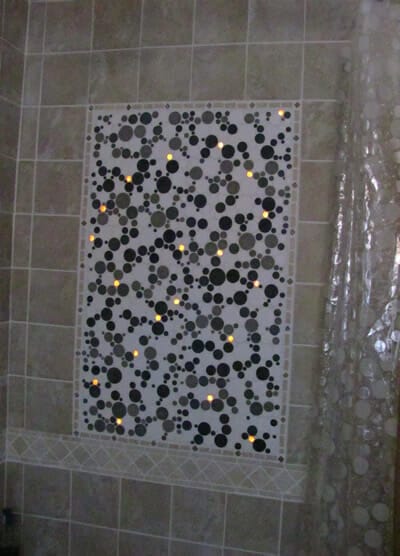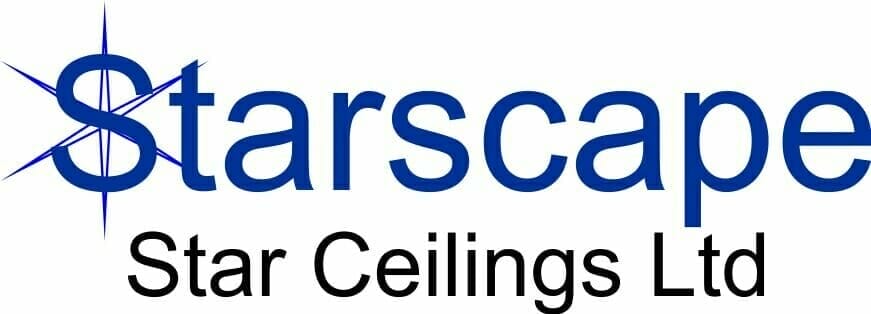This is a project which demonstrates a technique which has great potential in the bathroom and kitchen, but which isn’t particularly difficult to implement. Customer Projects 27 and 41 demonstrate how optical fibres can be installed so as to create bright “stars” in the grout between wall or floor tiles, but this latest project has the fibres providing indirect illumination, lighting glass tiles from behind.
The fundamental technique is the same. Optical fibres run from the light source, located possibly in the loft above or an airing cupboard, and down the wall behind the tiles. Obviously the fibres need to be in place before you start fixing the tiles – you can temporarily tape the fibre in place before starting to apply the tile adhesive.


The fibres are taped to the wall before the mat of mosaic tiles is fixed in place and the fibre ends protrude through gaps.
Once the tile adhesive has set the fibres are cut back to a convenient length.
You can settle for just using the end point lighting effect, but a better idea is to combine this with some sideglow effect.
A heat gun/hair dryer is used to soften the last few centimetres of each fibre (top photo), allowing it to be wound into a tight coil.
The heat damages the fibre cladding with the result that light leaks through the damaged area, producing a more even level of illumination behind the tile than would be the case if only end point light was used.
Normally, we’d recommend caution when using hot melt glue with polymer fibre optics since the heat from the glue is inclined to damage the fibre. However, in this case doing a bit of damage is a good thing since it increases the amount of light escaping from the side of the coiled fibre.
Equally, the act of using a heat gun (pictured above) to coil the fibre end damages the fibre cladding and enhances the sideglow effect. What’s more, the flattened blob of hot glue actually helps to diffuse the light, helping to create a more even flow behind the glass tile. The hot glue also serves to secure the glass tile in place.
Once the glass tiles are fixed, it’s just a matter of grouting the tiles.
Do bear in mind that if your glass tile has a coat of paint at the back this will need to be removed to allow light to penetrate from behind. There are 20 illuminated glass tiles in this display, but a single light source could illuminate hundreds if so required.


The round glass tiles are interspersed among the ceramic tiles.
Each glass tile is illuminated by a single 1mm polymer optical fibre. The light source is located in the loft above, and the fibres run down behind the tiles. Click here to see a Video of this effect.
It is also possible to illuminate more than one tile from a single fibre by damaging part of the fibre at a point other than the end. However, this means that the intensity of the light further along the fibre will be reduced, so you’d need to do some experiments before committing yourself to this approach.
There’s no electricity in the glowing tiles, so no problem using them in the shower enclosure, and there’s only the one bulb to ever change.
